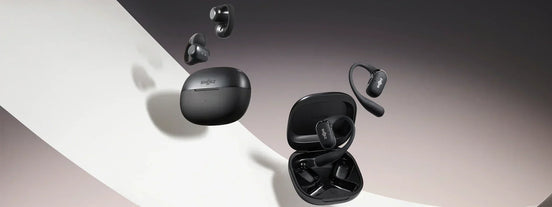With Bluetooth becoming a crucial part of modern wireless technology, it's natural to wonder if your favorite wireless headphones are permitted on flights. Whether you're enjoying music or watching a movie during your journey, the convenience of Bluetooth headphones is undeniable. However, questions about their interference with aircraft systems or other passengers’ devices often arise. So, are Bluetooth headphones allowed on a plane? Let’s explore the details.
Are Bluetooth Devices Allowed in the Air?
Yes, Bluetooth technology is generally allowed during flights. Bluetooth signals operate at a low frequency of 2.4 GHz, cycling through multiple channels and covering a limited range of approximately 30 feet. Because of these properties, the chances of Bluetooth causing any significant interference with an aircraft’s navigation systems are extremely low.
Airline Policies on Bluetooth Headphones
Most airlines require all electronic devices to be powered off during takeoff and landing. Once the plane reaches cruising altitude, many allow the use of Bluetooth headphones. It’s always wise to check with your airline regarding specific rules before your flight, as policies can vary. For instance, while British Airways enforces stricter device regulations during taxiing, takeoff, and landing, others may have different guidelines.
To ensure a smooth journey, stay updated on your airline’s latest rules before your departure.

How to Use Bluetooth Headphones on a Flight
Yes, you can use Bluetooth headphones while flying, but it’s important to follow these steps to avoid any disruptions:
Before Takeoff:
- Charge your Bluetooth headphones before boarding.
- Turn on "Airplane Mode" on your phone or tablet when instructed by the flight crew.
- Do not use your headphones until the plane has reached its cruising altitude.
During the Flight:
- Navigate to your device’s "Settings" menu.
- While "Airplane Mode" remains on, enable Bluetooth.
- Connect to your headphones via the device’s Bluetooth list.
Before Landing:
- Disable Bluetooth when instructed.
- Ensure "Airplane Mode" is still on.
- Remove your headphones as a signal that you’re complying with safety instructions.
Using open-ear headphones, like the Shokz OpenComm2, is particularly helpful during flights, allowing you to stay aware of important announcements while enjoying your content.
Connecting Bluetooth Headphones to In-Flight Entertainment
Many airlines offer in-flight entertainment via individual seatback screens. If the system supports Bluetooth, you can connect your personal headphones by following the on-screen instructions.
To ensure a good connection, ensure your headphones are in pairing mode. However, keep in mind that airline entertainment systems may not always provide the best sound quality due to limited connectivity. Moreover, not all airlines support Bluetooth in their entertainment systems, so it’s always best to check before your trip. Bringing a wired adapter or Bluetooth transmitter can be a useful backup.
Best Practices for Using Bluetooth Headphones on a Flight
Here’s a list of dos and don’ts to help you use Bluetooth headphones responsibly while flying:
Dos:
- Check your airline’s policies before the flight.
- Bring an adapter for wired connections in case Bluetooth isn't available.
- Stay within your Bluetooth device's range.
- Carry a wired backup pair of headphones for longer trips.
Don’ts:
- Forget to enable airplane mode.
- Ignore flight crew instructions or important safety announcements.
- Use mobile data, which may interfere with flight systems.
- Neglect to charge your headphones before boarding.
Conclusion
Using Bluetooth headphones on a flight is convenient and safe, as long as you follow airline rules and keep your device in airplane mode. For added safety and comfort, consider Shokz’s open-ear headphones on your next trip. They allow you to enjoy your favorite music while staying aware of your surroundings, perfect for a comfortable and connected flight.

















